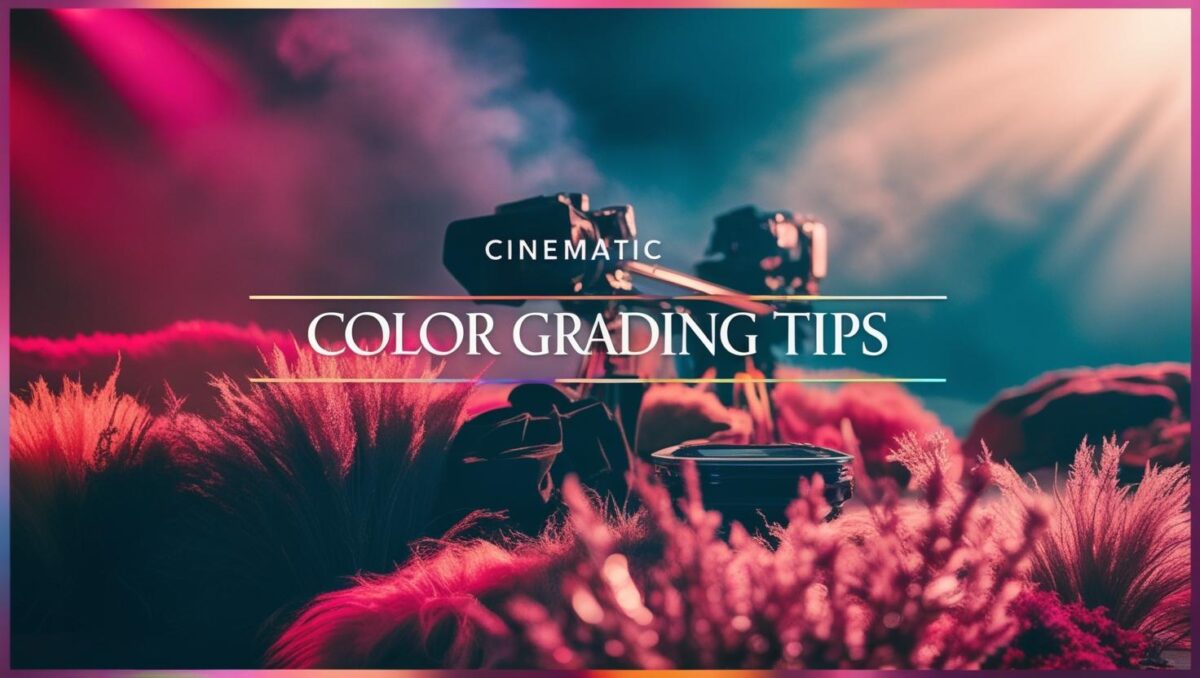If you’ve ever watched a cinematic wedding video and thought, “Wow, this looks like a Bollywood film!”, then you’ve just witnessed the power of color grading.
In India, where weddings are full of vibrant colours, emotions, and traditions, color grading becomes the secret sauce to make videos look premium and cinematic. Whether it’s a golden Haldi ceremony or a moody pre-wedding shoot in the hills, the right color tone can transform a good video into a masterpiece.
And if you’re someone planning to make wedding films or learn post-production, this guide is going to help you understand the basics of color grading, with practical tips to get started. Also, if you’re looking for a video editing course in Ahmedabad, we’ve got a great recommendation at the end.
Let’s dive in!
🎨 What is Color Grading and Why It’s Important
Color grading is the process of adjusting the colours, contrast, and tones of your video to match a specific mood or cinematic feel. While color correction fixes the basic brightness and white balance, color grading adds style and emotion.
Indian weddings are rich in visuals—bright saris, golden mandaps, colorful lighting, and dramatic moments. Without grading, all these can look dull or mismatched.
🔍 Fun Fact:
According to Adobe’s industry research, over 85% of wedding editors agree that color grading significantly improves storytelling quality.
🛠️ Best Software for Color Grading Wedding Videos
To start color grading professionally, you need to use the right tools. Some of the best color grading software used in the Indian wedding industry are:
- Adobe Premiere Pro – Most widely used and great for beginners.
- DaVinci Resolve – Industry-favourite for colorists, has a free version too!
- Final Cut Pro X – Ideal for Mac users, known for smooth editing.
- After Effects – Good for adding stylized looks, used along with other software.
These tools come with built-in features like LUTs (Look-Up Tables) and advanced color wheels that make grading easier.
📸 Pre-Grading Checklist: Shoot With Grading in Mind
Before you even begin editing, make sure your shoot is ready for grading:
- Shoot in log or flat profiles – This preserves more data for better color flexibility.
- Maintain consistent white balance – Especially important during multi-camera shoots.
- Use ND filters for outdoor events – Keeps highlights under control in bright Indian sunlight.
These small steps during the shoot make your color grading workflow much smoother.
🧑💻 Step-by-Step Color Grading Workflow for Wedding Videos
Here’s a simple workflow to follow when grading wedding footage:
1. Import & Organise Your Footage
Start by sorting clips by event – Haldi, Mehendi, Sangeet, Wedding, Reception. Keep it clean.
2. Basic Color Correction
- Adjust exposure, contrast, white balance, and saturation.
- Match lighting between clips shot at different times or venues.
3. Creative Grading
- Apply a LUT (cinematic preset) for consistent styling.
- Enhance skin tones (especially important for Indian weddings).
- Add slight warm or cool tones depending on the event vibe.
4. Final Polish
- Add vignette for focus.
- Slight sharpening and shadow/highlight tweaks.
- Use glow effects or soft contrast for that dreamy wedding feel.
🎯 Pro Tip: Always grade the skin tones first, then adjust the surroundings accordingly.
🌈 Popular Color Grading Styles for Indian Weddings
Indian wedding videos don’t have to look the same. You can match the color tones to the event and vibe. Here are some popular styles:
1. Warm and Romantic
Perfect for couple shots, pheras, and ring exchange moments. Adds golden hues and emotional warmth.
2. Festive and Vibrant
Use during Haldi, Mehendi, and Sangeet. Brightens colours and adds fun energy.
3. Moody and Cinematic
Used during pre-wedding shoots, candid shots, or intimate moments. Low contrast, rich shadows.
4. Pastel & Soft Look
Trending in modern destination weddings. Works well with pinks, off-whites, and open daylight shots.
🧑🤝🧑 Tips for Indian Skin Tone Grading
One of the most important aspects of wedding videos in India is getting skin tones right.
- Avoid over-brightening brown or wheatish skin
- Use masking tools to grade skin separately
- Use warm highlights and slightly lowered mids for natural tones
- Keep an eye on color casts from colorful lighting (common in wedding venues)
This makes a huge difference in how professional your final video looks.
🎛️ Using LUTs to Speed Up the Process
If you’re just starting out or want quick results, LUTs can save you time.
- What are LUTs? Pre-designed color presets you can apply in one click.
- Where to get them? Many are free online; paid ones offer Bollywood-style wedding LUTs.
- Can I use LUTs only? No. Always tweak brightness, shadows, and white balance after applying.
For Indian weddings, look for LUTs that handle rich reds, golds, and skin tones effectively.
🚫 Common Color Grading Mistakes to Avoid
Here are a few no-no’s many new editors make:
- Over-saturation: Makes skin look unnatural
- Ignoring consistency: Clip-to-clip differences look unprofessional
- Relying only on LUTs: It’s a tool, not a complete solution
- Not grading for different lighting setups (indoor/outdoor)
A little caution and good taste can take your edits from average to awe-inspiring.
🎓 Want to Learn Color Grading Professionally?
If you’re based in Gujarat or anywhere nearby and want to learn editing hands-on, you should check out a professional video editing course in Ahmedabad.
🔹 Recommended: Kalapurnam Institute, Ahmedabad
Kalapurnam Institute has been training creative professionals since 2006. They offer complete video editing courses, including color grading techniques for wedding videos, using tools like Premiere Pro, Final Cut Pro, and DaVinci Resolve.
Why Kalapurnam?
- Experienced trainers with real wedding project experience
- Practical sessions + certification
- Freelance and job support
- Exposure to client-style projects for portfolio building
So if you’re serious about editing Indian wedding videos with cinematic flair, a video editing course in Ahmedabad at Kalapurnam could be your perfect first step.
✅ Final Thoughts
Color grading is not just a technical task—it’s an art that gives your wedding films emotion, depth, and elegance. Whether you’re editing for friends, starting a freelance gig, or dreaming of shooting big fat Indian weddings, learning to grade well is a skill that pays off—literally.





